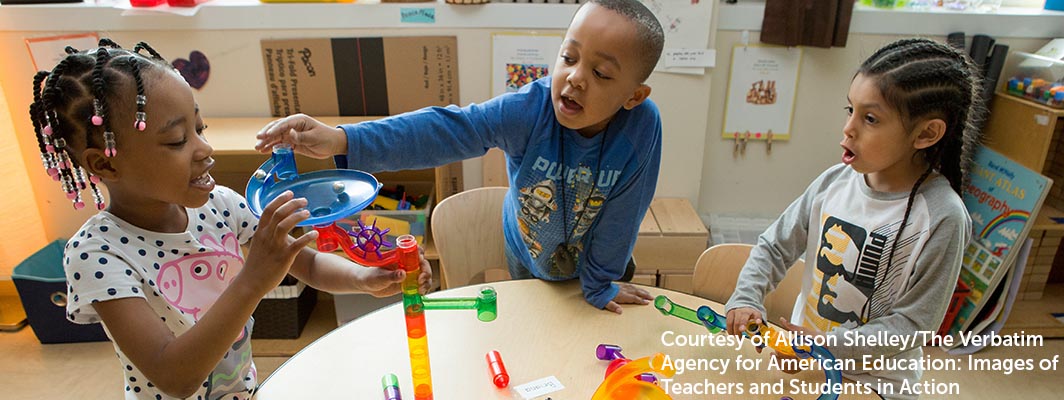
As community makerspaces begin to take root in Ontario’s elementary schools, students are behaving better. They are also getting higher grades.
What are makerspaces? They’re creative spaces where students can gather to explore, tinker, discover and create, and they’re making students more enthusiastic about school.
In these spaces students are learning how to tinker collaboratively with a problem and keep trying until they find a solution. They are learning to be thinkers, innovators and problem-solvers rather than mere consumers of information. And these are just some of the benefits teachers are reporting.
Makerspaces support hands-on exploration and learning. They are most often associated with STEM education (science, technology, engineering and math). But really, they’re interdisciplinary, promoting important educational principles such as inquiry, play, imagination, innovation, critical thinking, problem solving and passion-based learning.
They arise from the wider maker movement and they are emerging now in formal education settings globally.
As the founder of MAKE magazine Dale Dougherty states in his 2011 TED Talk: “We are all makers.”
In partnership with the Ontario Ministry of Education, the Council of Ontario Directors of Education and the University of Ontario Institute of Technology, I am leading a team of researchers to put makerspaces into elementary schools in 20 Ontario school boards. My research explores how teachers work together to explore news ways of teaching and learning through makerspaces.
Our project began by introducing teachers to a number of innovative ideas and practices in makerspace teaching and learning.
Teachers attended a two-day professional learning session, where they explored digital technologies such as digital circuits, 3D printing, augmented and virtual reality, e-textiles, programmable robots, coding and green screen video work. They had opportunities to collaborate, plan lessons with colleagues and do their own making.
We then gave funding to each of the first 11 school boards — to purchase equipment and supplies for participating schools. Researchers then followed teachers to track their use of tools and technologies and their promotion of student inquiry, creativity, design and critical thinking.
To date, they have created more than 100 maker-focused lesson plans for students in Grades 1 to Grade 8 in both English and French Immersion programs. Nine more school boards have joined for the second year of the project.
Teachers in all participating schools stated that their students are more engaged and more motivated when they are learning in a makerspace environment.
They also noticed a reduction in discipline problems. And they recorded improvements in academic achievement, particularly among students with learning disabilities and those who struggle in a traditional classroom setting.
Giving students the freedom to pursue projects that are authentic, meaningful and based on their own “wonderings” or passions has provided opportunities for a more personalized and inclusive learning experience for all students.
Teachers also observed that a variety of 21st-century skills and competencies were developed as a result of the makerspaces, such as problem-solving, communication, collaboration and the development of perseverance. Collaboration was one of the most highly reported competencies developed across all schools.
“In the beginning they were nervous,” said one teacher.
“They wanted me to help them all the time. But once they got the hang of just trying it, figuring it out, knowing that I’m not going to fix the problem for them, then they would persevere.”
What’s particularly noteworthy is that the increase in collaboration emerged not just among the students, but the teachers and staff, as well. Inter-generational and bi-directional learning occurred between students and teachers, peers and students of different ages.
It can be a challenge to implement a makerspace — to motivate and train staff, outfit and maintain equipment and the space, and to build a true maker culture in a school. The benefits, however, outweigh the costs and effort.
Having a maker mindset is key. In order for schools to establish a true makerspace, there must be buy-in and a commitment from staff, students and the wider community — to establish a culture of innovation, trial-and-error, problem-solving, persevering through difficult tasks, learning from mistakes and taking risks.
A makerspace is so much more than a space that houses equipment. A maker culture fosters 21st-century skills such as communication, collaboration and creativity. It offers opportunities for students to share their learning at local and global community levels through Maker Faires and websites such as www.instructables.com, www.thingiverse.com and www.DIY.org.
![]() In Ontario, we expect significant and sustainable ongoing benefits in teacher practice when the imaginative, integrated and innovative inquiry-based projects are developed, implemented and shared throughout the province.
In Ontario, we expect significant and sustainable ongoing benefits in teacher practice when the imaginative, integrated and innovative inquiry-based projects are developed, implemented and shared throughout the province.
This article was originally published on The Conversation. Read the original article.